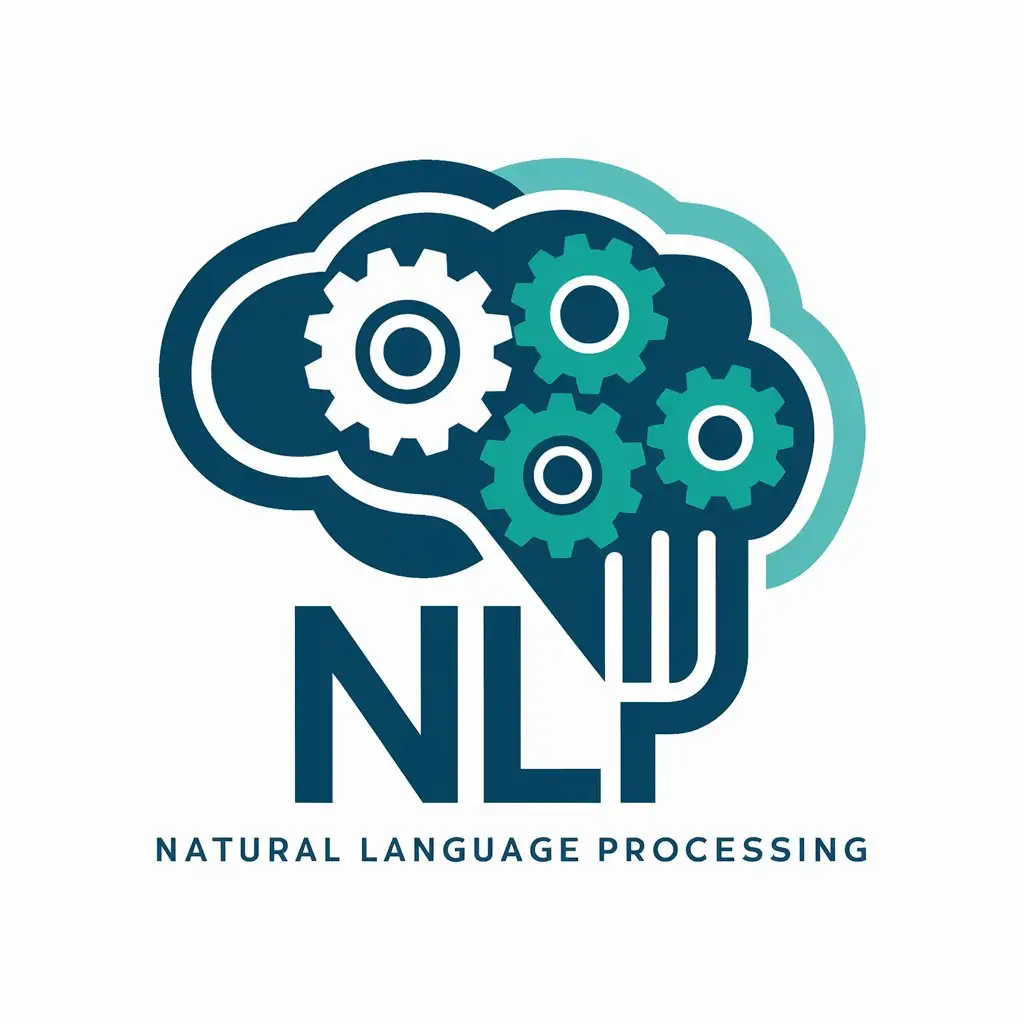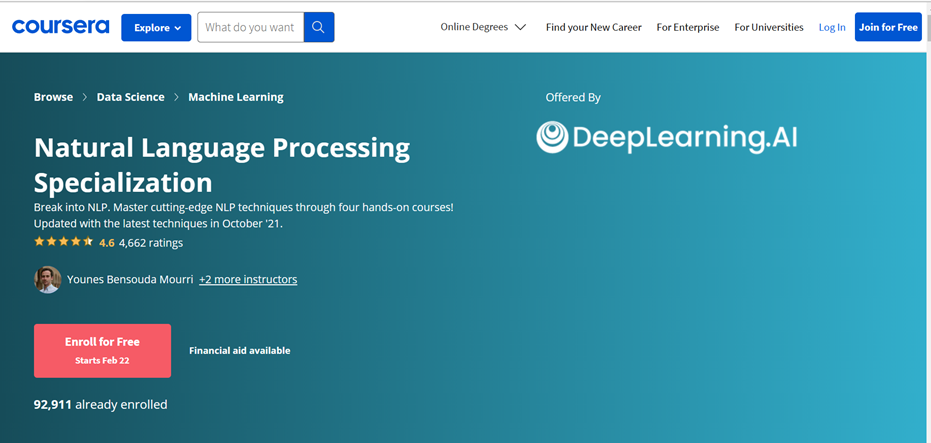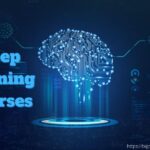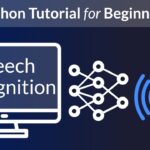My Unexpected Journey into Natural Language Processing: A Beginner’s Guide to an NLP Course
Have you ever talked to a smart speaker, used Google Translate, or noticed how your email filters out spam with surprising accuracy? For years, I found these things fascinating, almost like magic. How could computers, these logical, binary machines, possibly understand the messy, nuanced, and often contradictory world of human language? That curiosity, a persistent itch in the back of my mind, eventually led me down a path I never expected: taking a Natural Language Processing (NLP) course.
Let me tell you, it was less like a dry textbook and more like unlocking a secret code. If you’ve ever felt intimidated by terms like "machine learning" or "artificial intelligence," but also drawn to the idea of teaching computers to "read" and "understand," then pull up a chair. My story might just be the push you need to start your own NLP adventure.
What Even Is Natural Language Processing? (Demystifying the Jargon)
Before I even considered an NLP course, the term itself sounded like something out of a sci-fi movie. Natural Language Processing. It sounds complex, right? But in essence, it’s about making computers understand, interpret, and generate human language in a way that is useful.
Imagine teaching a toddler to talk. First, they learn individual words, then how to string them together, then how to understand the meaning behind those words, and finally, how to respond appropriately. NLP is, in a very simplified way, doing that with computers. We’re giving them the tools to process text and speech, pick out important information, understand sentiment, translate languages, and even write their own coherent sentences.
Think about it:
- When you search for something online, NLP helps the search engine understand what you really mean, not just the exact words you typed.
- When your phone auto-corrects your typos, that’s NLP at work.
- When a customer service chatbot answers your questions, it’s using NLP to grasp your intent.
It’s everywhere, once you start looking. And that, for me, was the initial spark.
My "Aha!" Moment: Why I Chose an NLP Course
I’ve always been drawn to stories and information. As someone who enjoys digging into data, I kept encountering a wall: so much valuable information exists in unstructured text – emails, reviews, articles, social media posts. How could I make sense of it all without reading every single word myself? It felt like having a treasure chest full of gold but no key.
I initially thought, "This is too technical for me." My background wasn’t in computer science, and the idea of advanced algorithms felt daunting. But the allure of understanding how companies extract insights from customer reviews, or how news articles can be summarized automatically, was too strong to ignore. I wanted that key. I wanted to understand how to turn raw text into usable data.
So, I started looking for a beginner-friendly Natural Language Processing course. I wasn’t looking to become an expert overnight, but I wanted a solid foundation. I wanted to learn the building blocks, to get my hands dirty, and to see if I could actually "speak" to computers through language.
Stepping into the Classroom (or Online Portal): What I Actually Learned
Choosing an online NLP course was a bit like walking into a massive library – so many options! I settled on one that promised a gentle introduction and plenty of practical exercises. And honestly, it was one of the best decisions I’ve made. Here’s a peek at what I discovered:
1. The Foundations: Text Preprocessing – More Than Just Words
Before a computer can understand language, we need to clean it up. This was one of the first things I learned, and it’s surprisingly crucial. Imagine trying to read a book where every word is misspelled, punctuation is missing, and sentences run together. That’s what raw text often looks like to a computer.
We covered things like:
- Tokenization: Breaking sentences into individual words or phrases.
- Stop Words Removal: Getting rid of common words like "the," "a," "is" that don’t usually carry much unique meaning.
- Stemming & Lemmatization: Reducing words to their root form (e.g., "running," "runs," "ran" all become "run"). This helps the computer recognize that these are all variations of the same idea.
It felt a bit like learning to sort LEGO bricks before building something grand. Essential, but not the most glamorous part.
2. Unpacking Meaning: From Bags of Words to Word Embeddings
This is where things started getting really interesting! How do you turn words into something a computer can understand – numbers?
- Bag-of-Words (BoW) & TF-IDF: We learned simple methods like counting how often words appear in a document (BoW) and then refining that by giving more importance to words that are unique to a document (TF-IDF). This helps us understand what a document is about.
- Word Embeddings: This was a real "jaw-dropping" moment for me. Imagine giving each word a unique "flavor profile" made of numbers, where words with similar meanings have similar profiles. So, "king" and "queen" would be numerically close, and you could even do things like "king – man + woman = queen." It’s like words suddenly gained a spatial relationship, allowing the computer to grasp nuances and context. It’s a bit like magic, but it’s pure math!
3. The Magic of Classification: Sentiment Analysis and Spam Detection
Once words could be represented numerically, we could start asking computers to classify text. This felt incredibly powerful.
- Sentiment Analysis: Is a movie review positive, negative, or neutral? Is a tweet happy or angry? This technique helps businesses understand customer feedback on a large scale.
- Spam Detection: Remember that email filter? We learned the basic principles of how a system can be trained to recognize patterns that indicate spam, saving us from countless unwanted messages.
These practical applications really brought the concepts to life.
4. Taming Sequences: Recurrent Neural Networks (RNNs) and Transformers (Simplified)
Later in my NLP learning journey, the course touched upon more advanced models, especially those used for understanding sequences of words.
- RNNs: These models are designed to remember information from previous words in a sentence, which is crucial for understanding context. Think about how the meaning of a word can change based on the words around it.
- Transformers: These are the big players behind much of the recent progress in NLP (like ChatGPT, though the course focused on the foundational concepts). They’re incredibly good at understanding relationships between words, even if they’re far apart in a sentence. We explored the idea of how they work, without getting bogged down in every single mathematical detail, which was perfect for a beginner.
5. Practical Projects: Getting My Hands Dirty
The most valuable part of the Natural Language Processing course was the projects. I got to:
- Build a simple sentiment analyzer for movie reviews.
- Create a text summarizer that extracted key sentences from articles.
- Develop a system to identify keywords in a batch of documents.
These hands-on experiences solidified my understanding and gave me the confidence that I could actually do something with NLP. It wasn’t just theoretical; it was tangible.
Who Should Consider an NLP Course? (Is This For You?)
Honestly, I believe many people could benefit from learning NLP. It’s not just for hardcore data scientists.
- Data Scientists & Analysts: If you work with data, especially data that includes text, an NLP course is indispensable. It’ll give you tools to unlock insights from customer feedback, social media, or reports.
- Software Developers: Want to build smarter applications? NLP can help you create chatbots, improve search functions, or add language understanding capabilities.
- Marketers & Business Owners: Understanding customer sentiment, analyzing market trends from online text, or personalizing communication becomes much more effective.
- Linguists & Humanists: For those who study language, NLP offers powerful computational tools to analyze texts on a scale previously unimaginable.
- Curious Learners: Like me, if you’re simply fascinated by how language and computers can intersect, and you’re ready for a challenge, then absolutely!
You don’t need to be a math genius or a coding wizard to start. Basic programming knowledge (Python is highly recommended) and a willingness to learn are usually enough for beginner courses.
Navigating the Course Landscape: Finding Your Perfect NLP Journey
The world of online NLP courses is vast and varied. Here are a few tips I picked up:
- Look for Beginner-Friendly Options: Many courses are labeled as such. Don’t jump into advanced topics too soon.
- Check the Curriculum: Does it cover the fundamentals (preprocessing, embeddings, basic models)? Does it have practical projects?
- Read Reviews: What do previous students say about the instructor, the clarity of explanations, and the support offered?
- Consider Your Learning Style: Do you prefer video lectures, interactive notebooks, or text-based lessons? Some platforms cater to different styles.
- Focus on Practicality: A good course will have hands-on exercises and projects that allow you to apply what you’ve learned.
Whether it’s a specialized certification from a university, a module on a broader data science platform, or a focused course on sites like Coursera or Udemy, there’s likely an option that fits your needs and budget.
My Takeaways and Why It Was Worth Every Moment
Stepping into the world of NLP felt like gaining a new superpower. I can now look at a block of text not just as words, but as potential data points, waiting to be understood. My problem-solving skills have sharpened, and I feel a deeper appreciation for the complex interplay between human language and technology.
More importantly, it showed me that complex fields aren’t always impenetrable. With the right guidance and a good dose of curiosity, anyone can start to unravel their mysteries. The Natural Language Processing course wasn’t just about learning algorithms; it was about learning a new way to think about information and communication in the digital age.
Ready to Start Your Own NLP Story?
If you’ve ever found yourself wondering how computers seem to "understand" us, or if you’re looking for a way to extract meaning from the vast ocean of text data out there, then I genuinely encourage you to explore a Natural Language Processing course. It’s a challenging but incredibly rewarding field, and the skills you gain will open up doors you might not even know exist yet.
My journey began with a simple question and a desire to learn. Yours can too. The "magic" isn’t magic at all; it’s a fascinating blend of linguistics, computer science, and mathematics, all waiting for you to discover. Go on, take the leap – you might just surprise yourself!



